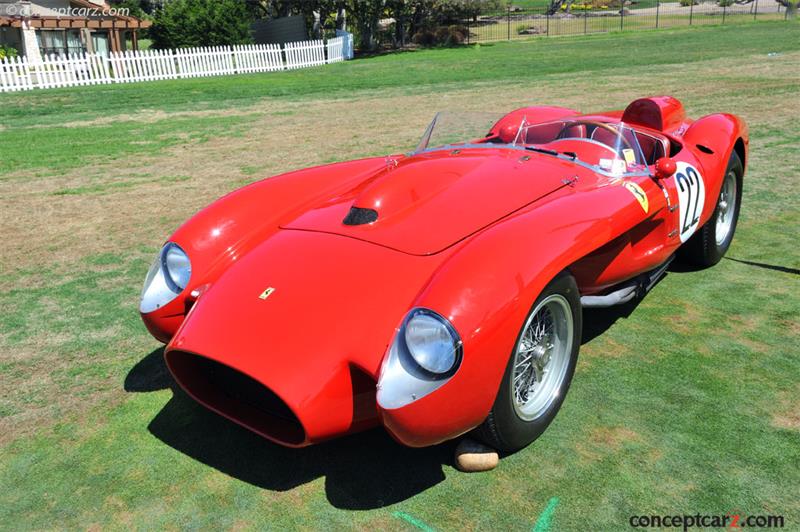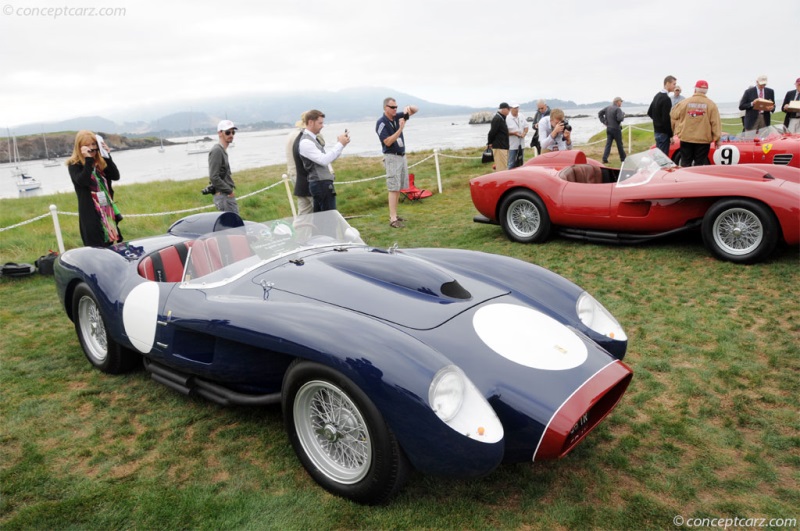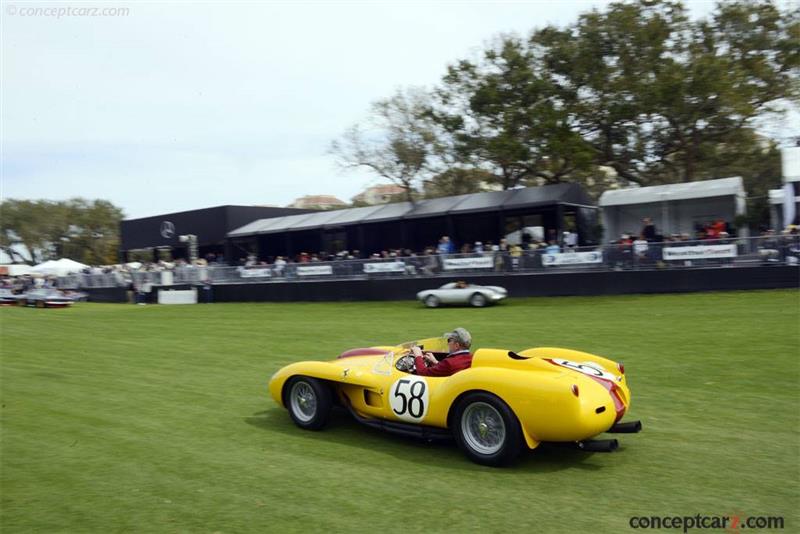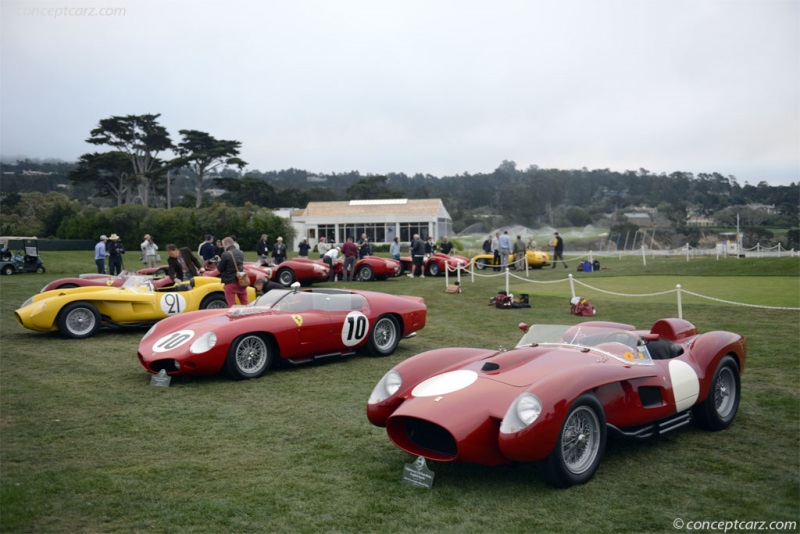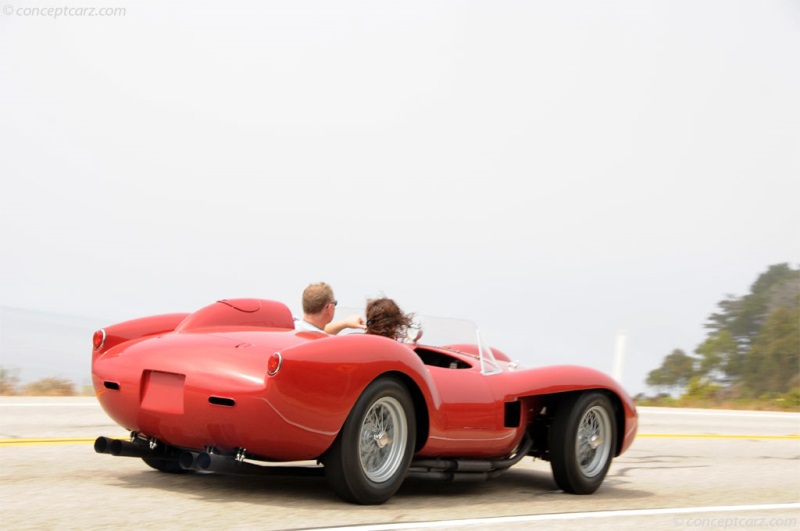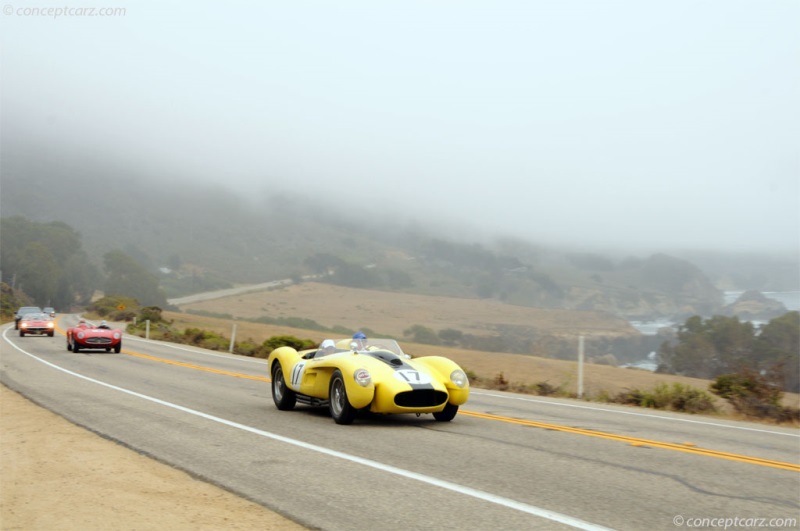It has been proven on numerous occasions that racing improves the breed, with safety scrambling to keep pace. The birth of the 250 Testa Rossa program was a direct result of the technology and tragedies of international motor sports during the 1950s. The Commissione Sportiva Internationale (CSI) implemented new rules and classifications aimed at making the sport safer following the disaster at Le Mans in 1955 and Alfonso de Portago's crash in the 1957 Mille Miglia, in which he and his co-driver, along with nine spectators were killed. 
Spyder by Scaglietti
Chassis #: 0748TR
View info and historyFerrari began the 1957 season with the 3.8-liter 315 S, which was later developed into the 4.0-liter 335 S. Despite the tragedy at the 1957 Mille Miglia, Ferrari went on to take The Sports Car Championship at the final round at Caracas.With Mercedes-Benz's departure from the sport in 1955, the highest levels of sports car racing was left to Ferrari and Maserati to battle for top honors, with increasing threats from Jaguar, Porsche, and Aston Martin. Ferrari was also forced to re-evaluate its U.S.-based efforts, as its four-cylinder TRC had little hope of attaining an outright victory in SCCA competition. Flanked on all fronts, Ferrari forged ahead and created one of the greatest sports racing cars in history, the 250 Testa Rossa. The name 'Testarossa' was first used by Ferrari on the four-cylinder 500 TR, with the name meaning 'red head' due to the car's red-painted cam covers. With the tragedies of the mid-1950s, Ferrari anticipated a reduction in capacity for sports cars by the CSI for the 1958 season. They began work on a car powered by the 2,953cc, 250 GT, V-12 engine. Enzo intended the engine to be a more powerful version of the four-cylinder car while retaining its reliability and handling characteristics. Developed under Carlo Chiti's engineering team, the engine was given a revised cylinder head design, high compression pistons, special conrods, and six Weber twin-choke carburetors. 
Spyder by Scaglietti
Chassis #: 0722TR
View info and historyInspired by the Aston Martin DBR1, Ferrari development focused on building a reliable, production-based, three-liter sports car with forgiving handling traits and aerodynamic bodywork. Work began in early 1957 with the first prototype example being chassis number 0666 TR. It was constructed on the tipo 525 chassis with A-arms and coil springs in the front, and a De Dion tube and transverse leaf-spring setup in the rear. The initial engine was of the contemporary 250 GT-type, and tuned beyond the factory-prepared Tour de France specification. The fully enveloping coachwork was similar in style to the 290 MM models of 1956. Since it was a works-team car, it was given right-hand-drive arrangement. The Testa Rossa prototype was completed in May of 1957 and made its racing debut at the ADAC 1000 Km Nürburgring. During the practice session, the Scuderia Ferrari-works drivers were all given an opportunity to try the new race car, including Phil Hill, who had only recently joined the factory team. During qualifying, Olivier Gendebien and 0666 TR posted the sixth fastest time, behind the large-displacement Ferrari and Aston Martin works entries. Masten Gregory had been hired to co-drive the car and following a confusing driver shuffle, Gregory left believing he would return in the morning as a spectator, not as an entrant. He thought wrong! Moments before the start of the race, a frenzied Ferrari mechanic burst into Gregory's hotel room informing him of his mistake. The disheveled Gregory arrived just in time and set off at a rapid pace. Within a few laps, he was running as high as 6th. Driving duties were eventually handed over to Olinto Morolli who had no time practice in the new prototype and little experience with the track. His lap times reflected his inexperience, some three minutes slower than Gregory. 0666 TR would finish 10th overall and despite the slower pace, it was a respectable debut. Chassis number 0704 was the second Testarossa prototype and wore a body by Scaglietti featuring distinctive pontoon fenders, causing a sensation when it arrived at Le Mans. Scaglietti later described the car as a 'Formula 1 car with fenders.' Chassis 0666 and 0704 were entered for Le Mans but both suffered problems with new pistons. 0666 failed to start and 0704 retired, having run as high as second place.
Spyder by Scaglietti
Chassis #: 0738TR
View info and history
Auction entries : 1Further development followed and the Testa Rossa's next appearance was at the Swedish 6-hour Grand Prix in Kristianstad, where it was equipped with the experimental 3.1-liter engine that had recently been tested at Le Mans. Gendebien and Maurice Trintignant were tasked with driving duties for 0666, however, after an hour and a half of racing, the engine, suffering from various ailments, forcing an early retirement. Upon its arrival back home, the CSI had confirmed the new three-liter limit for the 1958 season. Between September and October 1957, the enveloping body of 0666 TR was removed and replaced by Scaglietti in the pontoon-fender style, with inside door hinges and an air vent installed on the right side between the fender and hood. Its driveline was updated with the tipo 128 LM Testa Rossa motor (number 0666 TR, internal number GES N 6) and four-speed gearbox.At the final round of the championship at the Venezuelan Grand Prix at Caracas (November 3rd), Wolfgang von Trips and Wolfgang Seidel finished third in 0666 with Maurice Trintignant and Gendebien in fourth with 0704. The two TR prototypes had been joined by two front-running 335 S models. This effort help Ferrari win the 1957 Manufacturer's Championship. 
Spyder by Scaglietti
Chassis #: 0742TR
View info and history0666 TR was left in South America with the Ferrari distributor, Carlos Kaufman, who transported it to Argentina to take part in the first race of the 1958 season, the 1000 Km Buenos Aires held on the 26th of January. At the race, the car was joined by four other Testa Rossas (two Scuderia Ferrari team cars and two private entries). Von Trips, Gendebien and Luigi Musso drove 0666 TR to a 2nd overall behind the winning team car of Phil Hill and Peter Collins. Hill and Collins would win at the Sebring 12 Hours, and Luigi Musso and Gendebien won the Targa Florio. The 24 Hours of Le Mans was won by Gendebien and Hill. At the end of the season, having won four of the six races, Ferrari was awarded its third consecutive World Sports Car Championship for Constructors.With the introduction of the new racing regulations for the 1958 season, Ferrari was the only manufacturer to field a competitive car during the early part of the season. Ferrari's sole competition was from privately entered Maserati 300 S machines, but not to the same extent as the prior year. Maserati had withdrawn from competition following the Venezuela Grand Prix in 1957 which had proven to be a disastrous race for the team. As the season progressed, so did the competition, especially from the Aston Martin DBR1 which won the Nurburgring 1000 Km. The race had presented Enzo Ferrari with several new challenges, specifically rules requiring teams to use an inferior brand of fuel. Enzo threatened to withdraw but instead instructed his team to make the necessary changes to the engines to cope with the fuel. Although they did not run properly with the fuel, a 250TR finished in second place. The 250 TRs that raced at Le Mans in 1958 wore enclosed bodywork to improve aerodynamics, reduce life, and to take advantage of the track's high speed and long straight stretches. The Ferrari Works Cars were dubbed the TR58 to help distinguish them from the privateer entrants.
Spyder by Scaglietti
Chassis #: 0728TR
View info and historyBy the close of the 1950s, Scaglietti had become sidelined due to the increased output of Ferrari road cars. The redesign of the bodywork for the 1959 season was handed to Pinin and built by Fantuzzi. 1959 brought the introduction of new technology to the 250 TR - disc brakes. Enzo had been a strong supporter of drum brakes as he believed they were more reliable and predictable in how they faded compared to disc brakes. Drivers preferred the discs as they were easier to operate and the long-lasting pads were better suited for endurance races. The 1959 250 TR, known as the TR59, was both lighter and slightly more powerful than its 1958 predecessor. The engines received coil valve springs and other minor improvements helping to increase horsepower to 306. A new Colotti designed five-speed gearbox required the engine to moved four inches to the left in the chassis. The first race of the 1959 season was at Sebring since the Argentinean race in Buenos Aires had been dropped. While the TR59 of Dan Gurney, Chuck Daigh, Hill and Gendebien took victory at Sebring in March there were to be no further wins and Ferrari finished second to Aston Martin in the Championship.
Spyder by Scaglietti
Chassis #: 0752TR
View info and historyOnly minor changes to the 1960 regulations resulted in minor changes to the TRs. Since the gearbox was the source of many issues during the 1959 season, various versions were used and tested through the 1960 season. Three of the five TR59s were updated to the new specification and are commonly known as the TR59/60. The 1960 season consisted of five rounds and due to Aston Martin's withdrawal from competition, Ferrari was once again the favorite. Testarossas won at Argentina (Hill/Gendebien) and Le Mans (Gendebien/Paul Frere) and took the Championship once again. The factory team did not race at Sebring since they would be forced to use the sponsor's fuel. A privately entered TR59 was able to secure four points behind the Porsches. Porsche would win again at the Targa Florio and Maserati won at the Nurburgring 1000 km. A fully independently sprung TRI60 prototype had been used during the Le Mans test day, and although it was lighter, the TR59/60s handled better, finishing in first and second place. Using the independent suspension of the TRI60, Ferrari adapted it to a completely new spaceframe chassis for the 1961 season. The new car, called the TRI61, was lighter and stronger than its predecessors and wore a new body style with new front-end treatment and a Kamm-tail in the back. While the TRI61 was best suited for high-speed tracks, it was complemented by the newly introduced and nimble, mid-engined 246 SP. This proved to be a successful arrangement, as the TRI61 secured victories in the Sebring 12 Hours and Le Mans 24 Hours. The 246 SP won the Targa Florio, helping Ferrari earn another World Championship title. 
Spyder by Scaglietti
Chassis #: 0754TR
View info and historyThe CSI introduced new regulations for the 1962 world championship season, allowing both GT and prototype racers to contest overall victory, but only the GT cars were eligible to score points. Between 1957 through 1962 a total of 33 250 TRs of all types were built, including 19 'customer cars' sold to independent racing teams. All of the customer cars were equipped with left-hand drive, Scaglietti 'pontoon fender' bodies and live rear axles. During its racing career, the 250 TRs won 10 World Sportscar Championship races included the 1958, 1960, and 1961 24 Hours of Le Mans. They won the 12 Hours of Sebring in 1958, 1959 and 1961, and the 1958 Targa Florio. Victories were also earned at the 1958 and 1960 1000 km Buenos Aires and the 1961 4 hours of Pescara races. The 250 TRs helped Ferrari win the Constructor's World Sportscar Championship titles in 1958, 1960 and 1961.
by Daniel Vaughan | Apr 2020
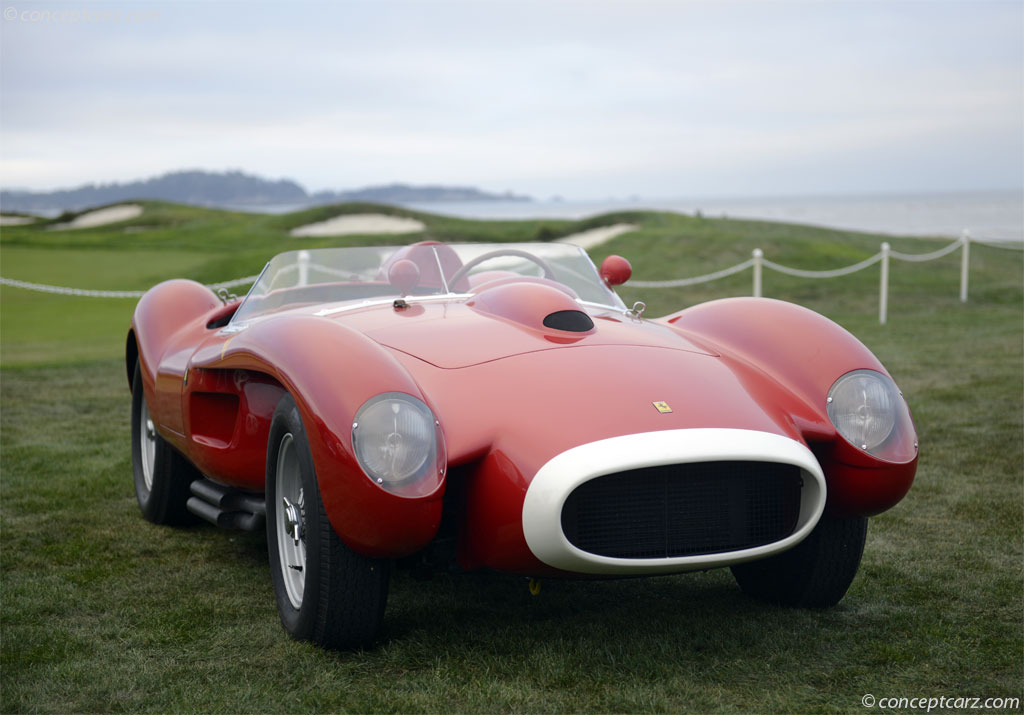
Spyder by Scaglietti
Chassis #: 0748TR
View info and history
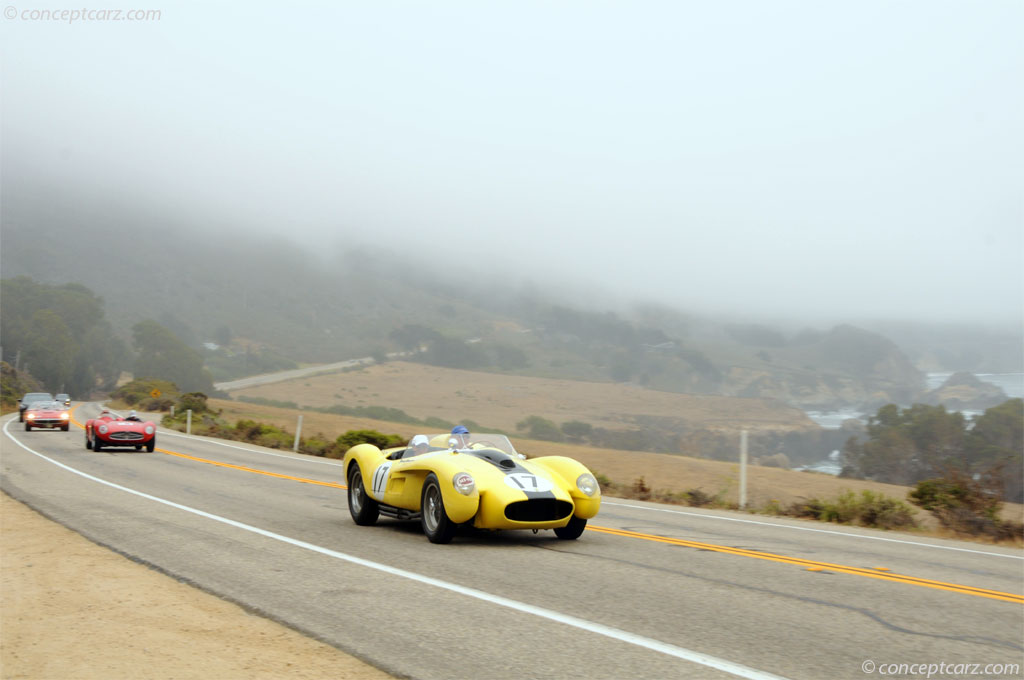
Spyder by Scaglietti
Chassis #: 0722TR
View info and history
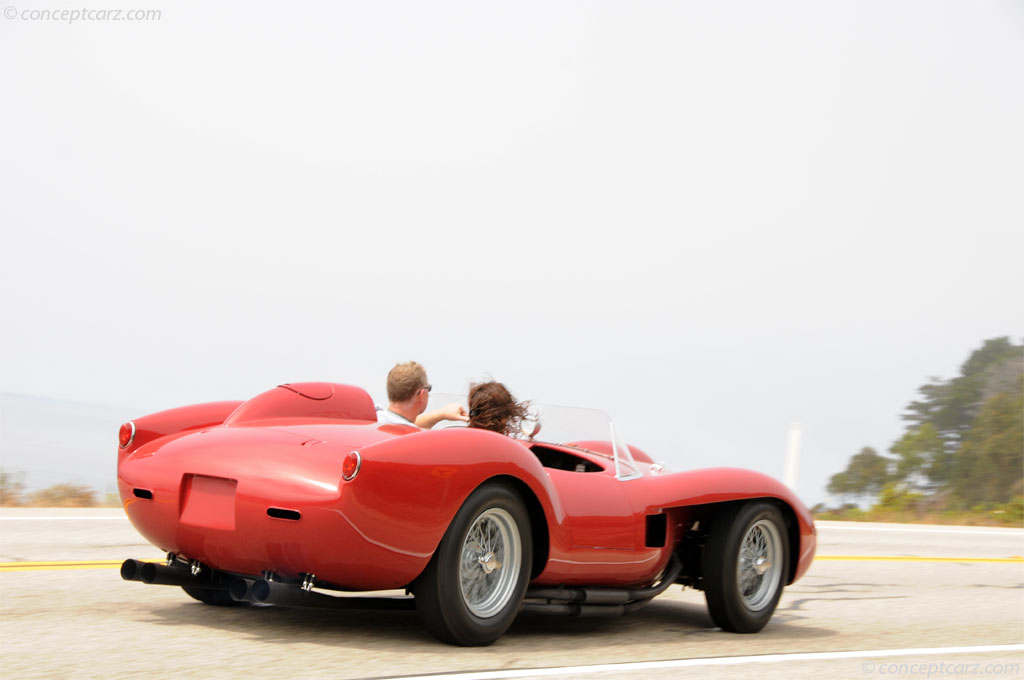
Spyder by Scaglietti
Chassis #: 0738TR
View info and history
Auction entries : 1
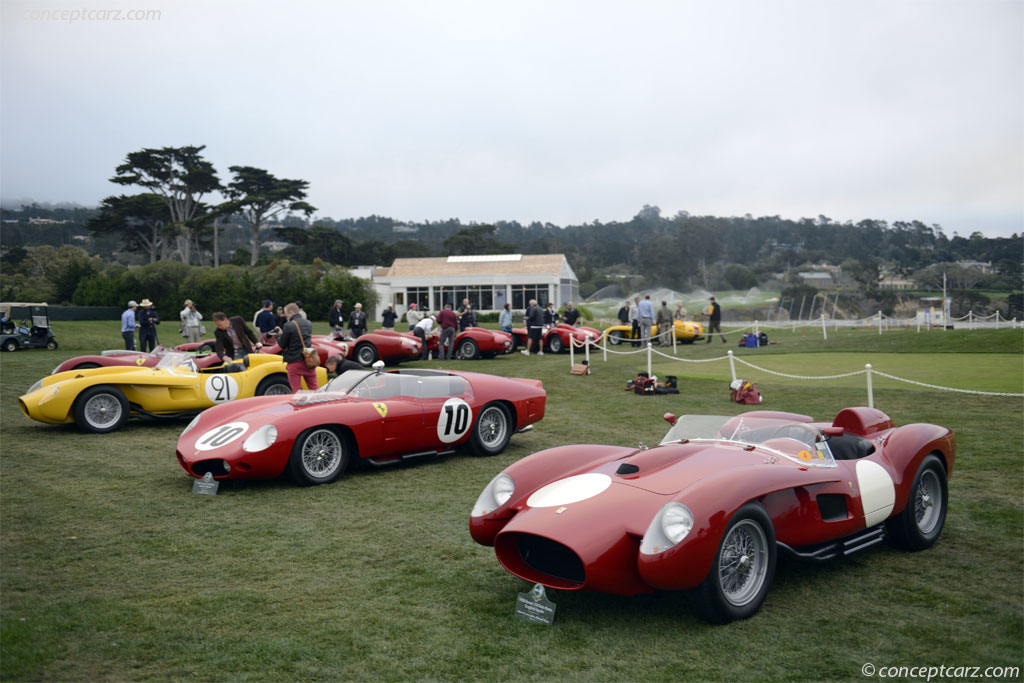
Spyder by Scaglietti
Chassis #: 0742TR
View info and history
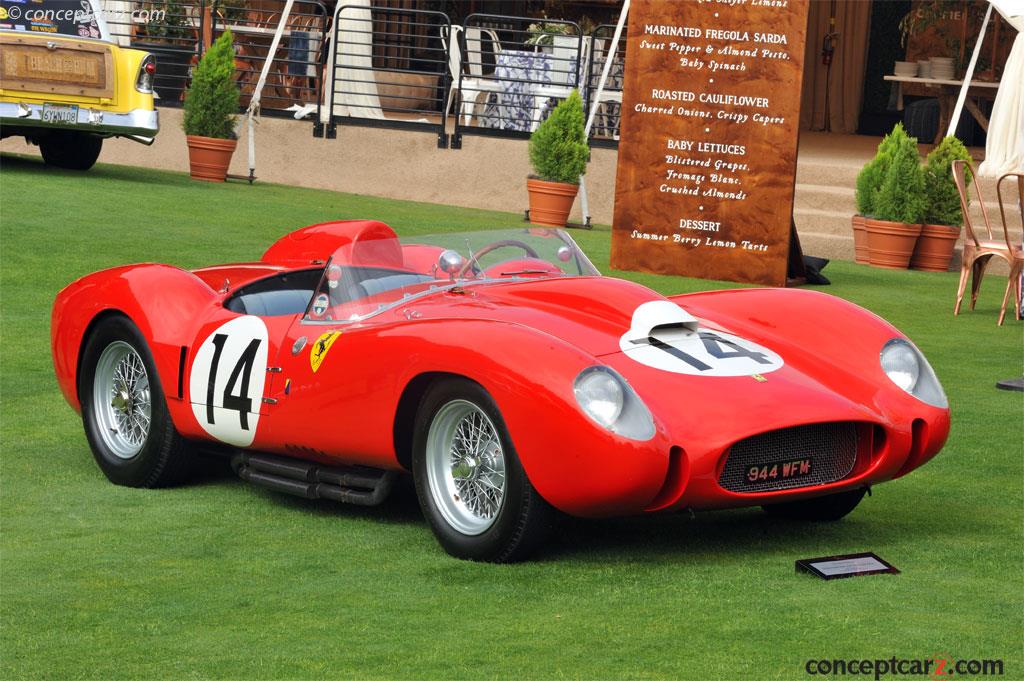
Spyder by Scaglietti
Chassis #: 0728TR
View info and history
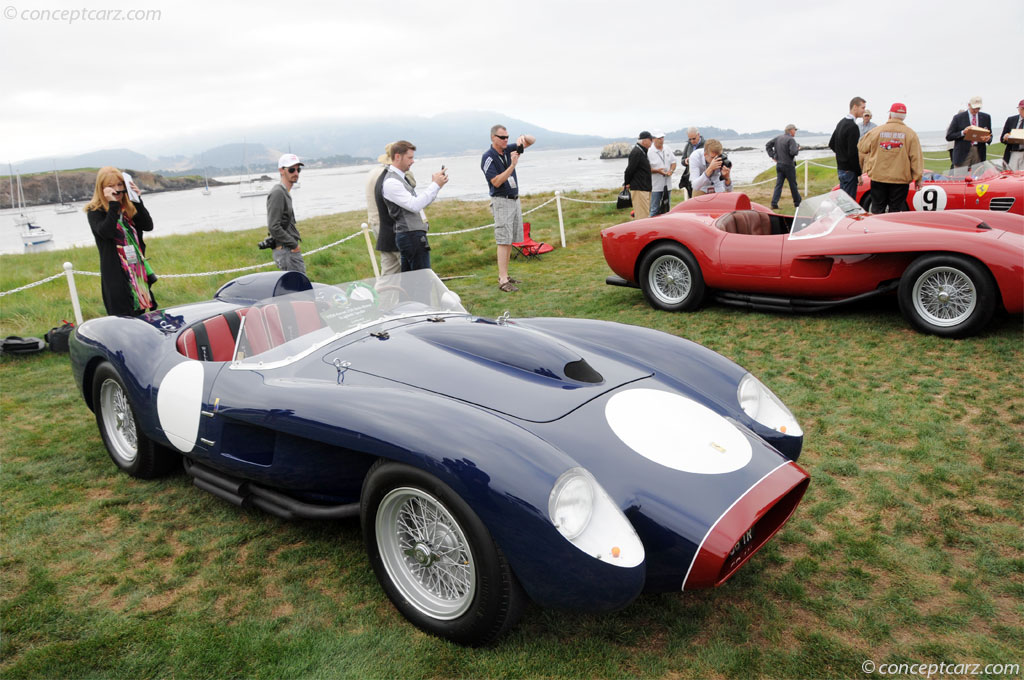
Spyder by Scaglietti
Chassis #: 0752TR
View info and history
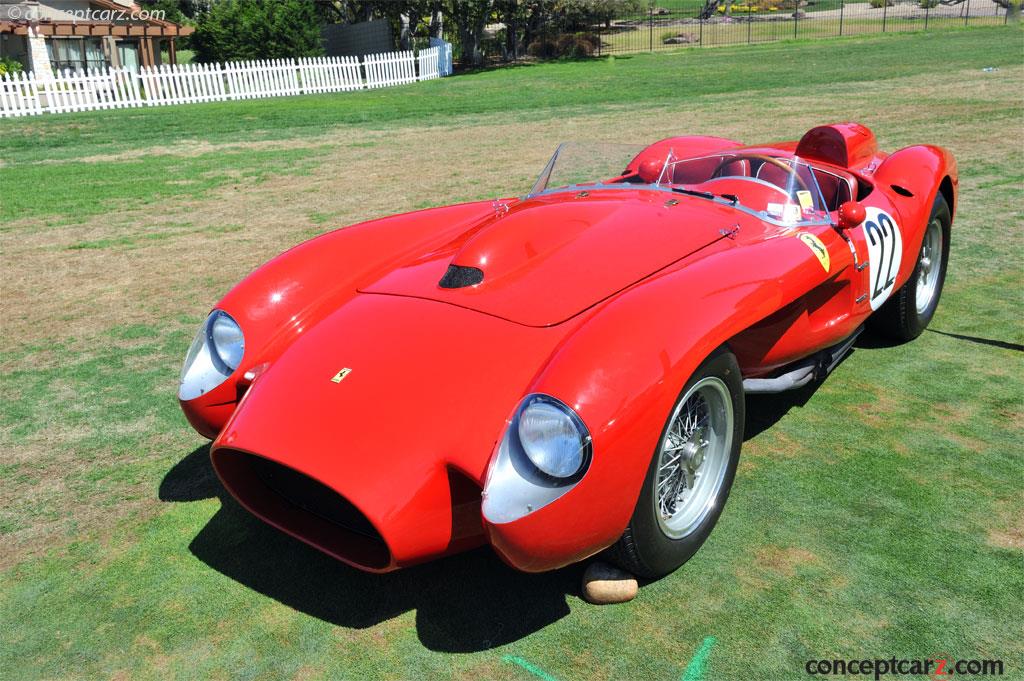
Spyder by Scaglietti
Chassis #: 0754TR
View info and history
by Daniel Vaughan | Apr 2020
Related Reading : Ferrari 250 Testarossa History
The Ferrari 250TR was produced from 1957 through 1958 during which time, only 19 examples were created. The pontoon fender body was designed by Scaglietti and the power was supplied through a Colombo 12-cylinder engine mounted at a sixty-degree angle and outfitted with six Weber 38 DCN carburetors. Power was sent to the rear wheels via a four-speed manual gearbox. With 300 horsepower, the 800 kg....
Continue Reading >>
Continue Reading >>
Related Reading : Ferrari 250 Testarossa History
In the post World War II era, the world was anxious to get back to racing. There were many interesting creations created during this time. Some were competitive, others were not. Sports Car Racing was becoming more and more popular as the years progressed. This progression came to an end in 1955, when the entire world was in-tuned to the worlds greatest racing stage, the 24 Hours of LeMans. The 24....
Continue Reading >>
Continue Reading >>
Similar Vehicles
Similar Automakers
1958 Ferrari 250 TR Vehicle Profiles
Recent Vehicle Additions
Performance and Specification Comparison
250 TR Specification Comparison by Year
Year
Production
Wheelbase
Engine
Prices
Related Automotive News

The Most Beautiful Ferrari Ever Emerges - The 1958 Ferrari 250 'Pontoon Fender' Testa Rossa
This February, a select few individuals will have the unprecedented opportunity to acquire one of Ferraris most iconic and revered models, celebrated for its unparalleled beauty and legendary racing history.
The Ferrari 250 Testa Rossa stands as an...

Just Sold! Gooding & Company Proudly Announces the Recent Private Sale of Racing Veteran 0704 TR, the Only Unrestored Ferrari 250 Testa Rossa in Existence
The collector car market leader recently brokered the private sale of the sole unrestored Ferrari 250 Testa Rossa extant. The overall winner of the 1958 12 Hours of Sebring, 0704 TR is recognized as one of the most significant racing Ferraris of all...
Luigi Musso: Talented, Tempting and Troubled
Following Alberto Ascaris back-to-back titles in 1952 and 1953 there have been no Italian Formula One World Champions. While there has been a great amount of hope throughout the years, Italians have been left without a World Champion. Perhaps, it could...
1958 Targa Florio: Musso Commands the Heights
During the invasion of Sicily during the Second World War it would be the mountainous roads around the island that would pose the greatest hindrance to the advance of the British and American forces trying to breakthrough on their way, ultimately, to...
1958 12 Hours of Sebring: Collins and Hill Escort a Red-Head Home to Victory
In a matter of months Peter Collins would lay dying of wounds received in a violent crash at the Nurburgring during the German Grand Prix. While many would be holding their breaths and facing the cold-hard truth of another motor racing death, there would...

1959 12 Hours of Sebring: 12 Hours to Success
In 1961, Richie Ginther would join Giancarlo Baghetti, Willy Mairesse and Wolfgang von Trips to come away with a 2nd place overall finish in the 12 Hours of Sebring. Completing 208 laps, the Ferrari 250 Testa Rossa would finish two laps behind eventual...

























